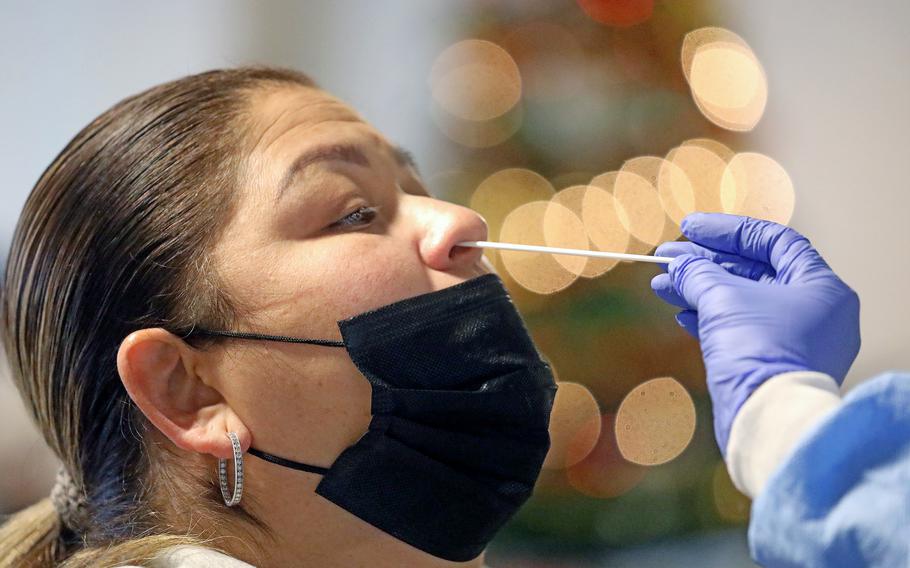
Marlene Alvarez receives a rapid PCR COVID-19 test at the South Central Family Health Center on Wednesday, Dec. 29, 2021, in Los Angeles. (Gary Coronado, Los Angeles Times/TNS)
Stars and Stripes is making stories on the coronavirus pandemic available free of charge. See more stories here. Sign up for our daily coronavirus newsletter here. Please support our journalism with a subscription.
(Tribune News Service) — One of the more curious, as well as annoying and even life-altering, symptoms of COVID-19 has been the widespread loss of smell. A team led by Johns Hopkins researchers took an extra-deep dive into some noses to find out why.
It’s not something that happens with other respiratory diseases, said Dr. Cheng-Ying Ho, a neuropathologist and associate professor of pathology in the Johns Hopkins School of Medicine, who joined researchers from several institutions, including the University of Maryland, and the state’s medical examiners office for the study.
“We decided to dig deeply into the mechanics of smell to see what actually occurs at the cellular level when SARS-CoV-2 invades the body,” Ho said.
The findings explain some basic biology. But they could provide insight into what’s going on during a COVID-19 infection in other organs, including the brain, and spur new and better therapies.
Researchers looked at the tissues of 23 people who died from COVID-19 and compared them with those from 14 who died from other causes.
They were not surprised to find there was inflammation in the olfactory bulb of those infected with the virus, the region that sends odor signals to the brain. Researchers already knew COVID appears to trigger inflammation around the body.
That much has been established without the specialized equipment the team deployed called electron microscopy, which uses special beams of electrified particles to create high-resolution images. Those very detailed images showed damage to blood vessels and nerves.
Damaged nerve cells, or neurons, means fewer axons, the part of those cells that transmit electrical impulses. That means fewer or no messages to the brain about smells.
Researchers were most surprised by what they did not see in the high-tech pictures of the bulb: coronavirus. That seems to confirm that the trouble with smelling is not a direct result of an infection, but a secondary problem.
Ho said they still don’t know who is most likely to have such a reaction and how bad the reaction will be. As with real-life people suffering COVID-19 cases, loss of smell was unrelated to the severity of the infection in the study, which was published Monday in the journal JAMA Neurology.
“In our study, the patient with the most severe olfactory injury only had mild infection, meaning no breathing difficulties and not on ventilator,” Ho said.
The team plans to look next at the reactions to different variants of the virus.
While the findings don’t immediately change anything for those who lost their sense of smell, there is good news. Most people regain their sense of smell in three or four weeks, with only a small portion still suffering after six months.
©2022 Baltimore Sun.
Visit baltimoresun.com.
Distributed by Tribune Content Agency, LLC.